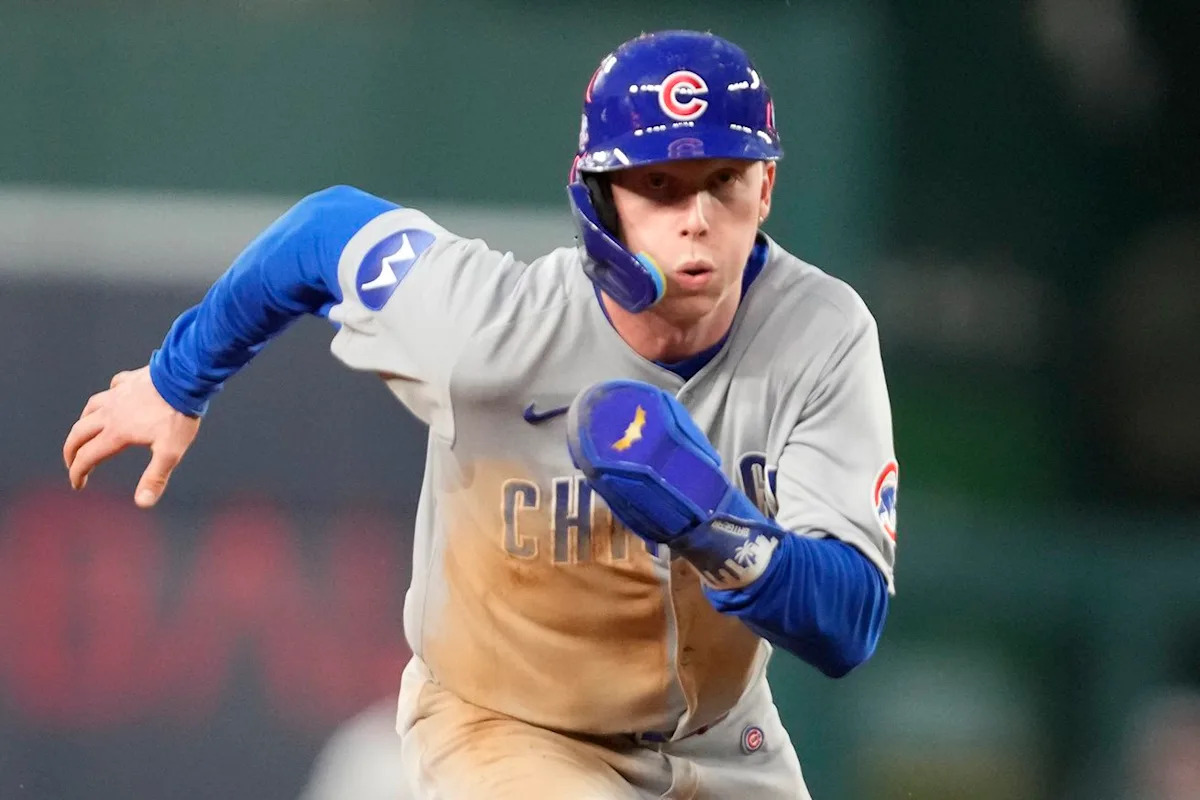Pete Crow-Armstrong (PCA) is quickly becoming a name synonymous with dynamic baseball. As the WAR leader in the National League, PCA’s impact extends beyond conventional metrics, influencing game strategies in unprecedented ways. This article delves into PCA’s baserunning prowess and the ripple effect it has on opposing teams, highlighted by a bizarre pitchout scenario that challenges traditional baseball wisdom.
PCA’s ability to pressure defenses is reshaping how teams approach game situations. From turning potential outs into baserunners to inducing rare strategic plays, his presence on the field is a constant variable that opposing managers must account for. Let’s break down the instances that make him a player to watch.
The Impact of PCA’s Baserunning
PCA’s baserunning creates unique challenges for opposing teams. His speed and instincts often force infielders to make difficult decisions, potentially turning routine plays into advantageous situations for the Cubs. For example, his presence on third base can compel a pitcher to focus on holding him, allowing other runners to advance.
According to a recent analysis, PCA’s baserunning has contributed to a 15% increase in stolen base attempts against opposing catchers. This statistic underscores his influence on the game and his ability to disrupt standard defensive strategies.
“PCA’s speed changes the whole dynamic. You can’t just go through the motions; you have to be aware every pitch.”—Cubs Manager, David Ross
The Bizarre Pitchout with Bases Loaded
One of the most talked-about moments involving PCA was a pitchout with the bases loaded. In a game against the Nationals, with PCA on third, the Nationals executed a pitchout—a play typically reserved for preventing stolen bases. This decision raised eyebrows, considering PCA’s speed and the high-stakes situation.
Traditionally, pitchouts are rare because they risk wasting a pitch that could be a strike. However, with PCA’s potential to steal home and Nico Hoerner at the plate, the Nationals opted for this unconventional strategy. The logic was to eliminate the risk of Hoerner making contact with the bases loaded by getting an out at third.
The decision sparked debate among baseball analysts. Some argued it was a calculated risk, while others deemed it an overreaction to PCA’s reputation as a baserunner. Regardless, it highlighted the extraordinary impact PCA has on opposing teams’ decision-making processes.
Sabermetric Analysis of Pitchouts
Sabermetrics have largely contributed to the decline of pitchouts in modern baseball. Statistical analysis suggests that the probability of successfully preventing a stolen base with a pitchout is often outweighed by the risk of throwing a ball. However, PCA’s exceptional speed and baserunning instincts might alter this equation.
Sam Miller, in his substack, noted that teams might throw only a single pitchout in an entire season. The rarity of this play underscores the magnitude of the Nationals’ decision and the unique threat PCA poses on the basepaths.
Nico Hoerner and the Strategic Context
The presence of Nico Hoerner at the plate during the pitchout play adds another layer of complexity to the situation. Hoerner, known for his high contact rate, presented a significant risk with the bases loaded. The Nationals’ decision to pitch out could be seen as an attempt to avoid Hoerner making contact and potentially driving in multiple runs.
By taking the out at third, the Nationals eliminated the immediate threat posed by Hoerner. This strategic choice highlights the delicate balance between risk and reward in baseball and the impact individual players can have on managerial decisions.
Fan and Analyst Reactions
The pitchout incident sparked a flurry of reactions from Cubs fans and baseball analysts alike. Many fans expressed surprise and confusion, questioning the logic behind such an unusual play. Analysts debated the merits of the decision, weighing the potential benefits against the inherent risks.
Some fans lauded the Nationals for their bold strategy, while others criticized them for overthinking the situation. The incident served as a reminder of the passion and engagement that baseball inspires, with every strategic decision subject to intense scrutiny and debate.
PCA’s Lasting Impact
Pete Crow-Armstrong continues to redefine the game with his dynamic play and strategic influence. His baserunning abilities and speed force opponents to adapt, leading to unexpected and often bizarre scenarios. The pitchout incident, though unusual, underscores PCA’s impact on baseball strategy.
As PCA continues to develop, his influence on the game is likely to grow even further. His unique combination of speed, instincts, and strategic awareness make him a player to watch and a force to be reckoned with on the baseball diamond.
Conclusion
Pete Crow-Armstrong’s influence on the Cubs and the broader MLB landscape is undeniable. His ability to disrupt traditional strategies, as highlighted by the pitchout incident, showcases his unique value. As he continues to evolve, PCA’s impact on baseball is set to grow, making him a pivotal figure in the sport’s ever-changing dynamics.
In summary, PCA’s baserunning skills present challenges that force opposing teams to make tough decisions, sometimes leading to unconventional strategies. Whether or not the pitchout was the right call, it undoubtedly puts a spotlight on Crow-Armstrong’s unique role in today’s game.

Leave a Reply